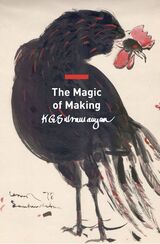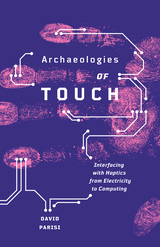
A material history of haptics technology that raises new questions about the relationship between touch and media
Since the rise of radio and television, we have lived in an era defined increasingly by the electronic circulation of images and sounds. But the flood of new computing technologies known as haptic interfaces—which use electricity, vibration, and force feedback to stimulate the sense of touch—offering an alternative way of mediating and experiencing reality.
In Archaeologies of Touch, David Parisi offers the first full history of these increasingly vital technologies, showing how the efforts of scientists and engineers over the past three hundred years have gradually remade and redefined our sense of touch. Through lively analyses of electrical machines, videogames, sex toys, sensory substitution systems, robotics, and human–computer interfaces, Parisi shows how the materiality of touch technologies has been shaped by attempts to transform humans into more efficient processors of information.
With haptics becoming ever more central to emerging virtual-reality platforms (immersive bodysuits loaded with touch-stimulating actuators), wearable computers (haptic messaging systems like the Apple Watch’s Taptic Engine), and smartphones (vibrations that emulate the feel of buttons and onscreen objects), Archaeologies of Touch offers a timely and provocative engagement with the long history of touch technology that helps us confront and question the power relations underpinning the project of giving touch its own set of technical media.
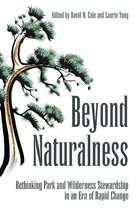
Beyond Naturalness brings together leading scientists and policymakers to explore the concept of naturalness, its varied meanings, and the extent to which it provides adequate guidance regarding where, when, and how managers should intervene in ecosystem processes to protect park and wilderness values. The main conclusion is the idea that naturalness will continue to provide an important touchstone for protected area conservation, but that more specific goals and objectives are needed to guide stewardship.
The issues considered in Beyond Naturalness are central not just to conservation of parks, but to many areas of ecological thinking—including the fields of conservation biology and ecological restoration—and represent the cutting edge of discussions of both values and practice in the twenty-first century. This bookoffers excellent writing and focus, along with remarkable clarity of thought on some of the difficult questions being raised in light of new and changing stressors such as global environmental climate change.

Teaming with NASA and the Department of the Interior, ecologist Andrew Hansen, along with his team of scientists and managers, set out to understand how climate and land use changes affect montane landscapes of the Rockies and the Appalachians, and how these findings can be applied to wildlands elsewhere. They examine changes over the past century as well as expected future change, assess the vulnerability of species and ecosystems to these changes, and provide new, collaborative management approaches to mitigate expected impacts. A series of case studies showcases how managers might tackle such wide-ranging problems as the effects of warming streams on cold-water fish in Great Smoky Mountain National Park and dying white-bark pine stands in the Greater Yellowstone area. A surprising finding is that species and ecosystems vary dramatically in vulnerability to climate change. While many will suffer severe effects, others may actually benefit from projected changes.
Climate Change in Wildlands is a collaboration between scientists and managers, providing a science-derived framework and common-sense approaches for keeping parks and protected areas healthy on a rapidly changing planet.
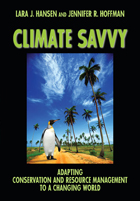
In Climate Savvy, climate change experts Lara Hansen and Jennifer Hoffman offer 18 chapters that consider the implications of climate change for key resource management issues of our time—invasive species, corridors and connectivity, ecological restoration, pollution, and many others. How will strategies need to change to facilitate adaptation to a new climate regime? What steps can we take to promote resilience?
Based on collaboration with a wide range of scientists, conservation leaders, and practitioners, the authors present general ideas as well as practical steps and strategies that can help cope with this new reality.
While climate change poses real threats, it also provides a chance for creative new thinking. Climate Savvy offers a wide-ranging exploration of how scientists, managers, and policymakers can use the challenge of climate change as an opportunity to build a more holistic and effective philosophy that embraces the inherent uncertainty and variability of the natural world to work toward a more robust future.
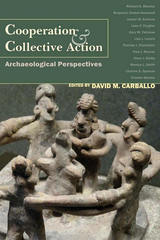
Disentangling the motivations and institutions that foster group cooperation among competitive individuals remains one of the few great conundrums within evolutionary theory. The breadth and material focus of archaeology provide a much needed complement to existing research on cooperation and collective action, which thus far has relied largely on game-theoretic modeling, surveys of college students from affluent countries, brief ethnographic experiments, and limited historic cases. In Cooperation and Collective Action, diverse case studies address the evolution of the emergence of norms, institutions, and symbols of complex societies through the last 10,000 years. This book is an important contribution to the literature on cooperation in human societies that will appeal to archaeologists and other scholars interested in cooperation research.


Throughout its chapters, the text asks students to apply key concepts to current data (which they are required to locate using the Internet and other sources) to get a clearer picture of the most pressing issues in environmental science. The text begins by exploring how changes in world population impact all aspects of the environment, particularly with respect to energy use. It then discusses what the first and second laws of thermodynamics tell us about renewable and nonrenewable energy; how current energy use is changing the global climate; and how alternative technologies can be evaluated through scientific risk assessment. In approaching real-world problems, students come to understand the physical principles that underlie scientific findings.
This informative and engaging textbook offers what prospective scientists, managers, and policymakers need most: the knowledge to understand environmental threats and the skills to find solutions.
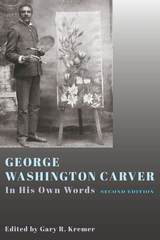
With a new chapter on the oral history interviews Dr. Kremer conducted (several years after publication of the first edition) with people who knew Carver personally, and the addition of newly uncovered documents and a bank of impressive photographs of Carver and some of his friends, this second edition of our classic title commemorates the 75th anniversary of Carver’s death on January 5, 2018.
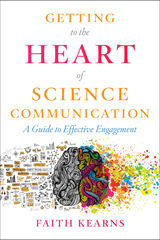
In Getting to the Heart of Science Communication, Faith Kearns has penned a succinct guide for navigating the human relationships critical to the success of practice-based science. Using interviews and personal anecdotes, as well as her own insights as a field scientist, Kearns walks readers through the evolution of science communication and how emotional and high-stakes issues have shaped communication. The meat of the book lies in the middle chapters, where Kearns offers key tools for communicators: listening, working with conflict, and understanding trauma, loss, and healing. She concludes the book with a substantive discussion on diversity, equity, and inclusion in science communication, and advice to readers for handling their own emotional needs in an unpredictable career landscape.
This meticulously researched volume takes science communication to the next level, helping scientists see the value of listening as well as talking, understanding power dynamics in relationships, and addressing the roles of trauma, loss, grief, and healing. This book will particularly resonate with early to mid-career scientists, graduate students, and researchers, especially those in applied sciences who work closely with the public.

Coeditors Louise K. Comfort and Harkunti P. Rahayu, accomplished experts in disaster preparedness, contend that it will give communities precious additional minutes to communicate warnings about imminent tsunamis to residents, potentially saving many lives. Chapters authored by a close group of collaborators present the science behind this new approach, describing conceptual design, computational models, and real-time testing of a prototype system in the warm equatorial waters of Indonesia’s Mentawai Sea. Introductory chapters explain the sociotechnical approach—how undersea sensors can transmit data to a network of electronic devices on land to alert residents to impending tsunami threats in near-real time. Subsequent chapters explore what this might look like: assessing communities at risk; designing interactive information systems for communication during an emergency; designing wireless networks for smartphone communication that can guide residents to safety; and designing community-based shelters. The book concludes with a thoughtful analysis of how these sociotechnical advances might be used for all coastal cities at risk of tsunamis, sea-level rise, storm surges, and other hazards.
Hazardous Seas is an invaluable guide for policy makers and international NGOs looking to save lives from tsunamis and mitigate crippling damage to communities, and provides a comprehensive overview of tsunami detection and warning for students of engineering, computer science, planning, policy, and economic and environmental analysis.

Making Nature Whole is a seminal volume that presents an in-depth history of the field of ecological restoration as it has developed in the United States over the last three decades. The authors draw from both published and unpublished sources, including archival materials and oral histories from early practitioners, to explore the development of the field and its importance to environmental management as well as to the larger environmental movement and our understanding of the world.
Considering antecedents as varied as monastic gardens, the Scientific Revolution, and the emerging nature-awareness of nineteenth-century Romantics and Transcendentalists, Jordan and Lubick offer unique insight into the field's philosophical and theoretical underpinnings. They examine specifically the more recent history, including the story of those who first attempted to recreate natural ecosystems early in the 20th century, as well as those who over the past few decades have realized the value of this approach not only as a critical element in conservation but also as a context for negotiating the ever-changing relationship between humans and the natural environment.
Making Nature Whole is a landmark contribution, providing context and history regarding a distinctive form of land management and giving readers a fascinating overview of the development of the field. It is essential reading for anyone interested in understanding where ecological restoration came from or where it might be going.
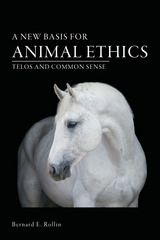

Project Planning and Management for Ecological Restoration presents principles of sound planning and management that will greatly increase the likelihood that completed projects will meet stakeholder expectations. John Rieger, John Stanley, and Ray Traynor have been involved in restoration activities for over thirty years and were part of the small group of restorationists who recognized the need for a professional organization and in 1987 founded the Society for Ecological Restoration. This book comes out of their experiences practicing restoration, conducting research, and developing and refining new techniques and methods.
In the book, the authors describe a process for planning and managing an ecological restoration project using a simple, four-faceted approach: planning, design, implementation, and aftercare. Throughout, the authors show how to incorporate principles of landscape ecology, hydrology, soil science, wildlife biology, genetics, and other scientific disciplines into project design and implementation. Illustrations, checklists, and tables are included to help practitioners recognize and avoid potential problems that may arise.
Project Planning and Management for Ecological Restoration provides a straightforward framework for developing and carrying out an ecological restoration project that has the highest potential for success. Professional and volunteer practitioners, land managers, and property owners can apply these guidelines to the wide variety of conditions and locations where restoration is needed. Long overdue, this book will inform and advance the effective practice of this rapidly expanding field.
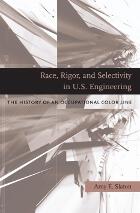
Despite the educational and professional advances made by minorities in recent decades, African Americans remain woefully underrepresented in the fields of science, technology, mathematics, and engineering. Even at its peak, in 2000, African American representation in engineering careers reached only 5.7 percent, while blacks made up 15 percent of the U.S. population. Some forty-five years after the Civil Rights Act sought to eliminate racial differences in education and employment, what do we make of an occupational pattern that perpetually follows the lines of race?
Race, Rigor, and Selectivity in U.S. Engineering pursues this question and its ramifications through historical case studies. Focusing on engineering programs in three settings—in Maryland, Illinois, and Texas, from the 1940s through the 1990s—Amy E. Slaton examines efforts to expand black opportunities in engineering as well as obstacles to those reforms. Her study reveals aspects of admissions criteria and curricular emphases that work against proportionate black involvement in many engineering programs. Slaton exposes the negative impact of conservative ideologies in engineering, and of specific institutional processes—ideas and practices that are as limiting for the field of engineering as they are for the goal of greater racial parity in the profession.
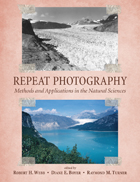
This volume explores the technical and geographic scope of this important technique, focusing particularly on the intertwined influences of climatic variation and land-use practices in sculpting landscapes. Contributors offer a broad-perspective review of the state-of-the-art of repeat photography, with twenty-three chapters written by researchers around the globe who have made use of repeat photography in their work. Topics addressed include
the history of repeat photography
techniques for creating and analyzing repeat photographs
applications in the geosciences
applications in population ecology
applications in ecosystem change
cultural applications
Repeat Photography demonstrates the wide range of potential applications, examines new techniques for acquiring data from repeat photography, and clearly shows that repeat photography remains a valuable and efficient means of monitoring change in both developed and developing regions. Over one hundred sets of photographs, including thirty-two pages of color photos, serve as examples.
Recent concerns about climate change and its effects on natural landscapes, combined with ongoing concerns about land-use practices, make this state-of-the-art review a timely contribution to the literature.
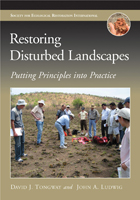
Written by restoration experts with a wealth of experience teaching restoration principles and techniques to practitioners and would-be practitioners from a variety of backgrounds, the book offers:
- an outline of a science-based, ecologically sound approach to restoration
- discussion of the conceptual framework and rigorous principles that underlie the approach
- case studies of two types of restoration projects (restoring mined landscapes and restoring damaged rangelands) that illustrate how the approach, framework, and four key principles for restoring landscapes have been implemented
- a variety of scenarios that represent typical restoration problems and how those problems can be handled
- indicators for monitoring and how landscape function can be tracked and analyzed as part of a comprehensive monitoring program.

The first part of the book introduces the process of ecological restoration in simple, easily understood language through specific examples drawn from the authors’ experience restoring their own lands in southern and central Wisconsin. It offers systematic, step-by-step strategies along with inspiration and benchmark experiences. The book’s second half shows how that same “thinking” and “doing” can be applied to North America’s major ecosystems and landscapes in any condition or scale.
No other ecological restoration book leads by example and first-hand experience likethis one. The authors encourage readers to champion restoration of ecosystems close to where they live . . . at home, on farms and ranches, in parks and preserves. It provides an essential bridge for people from all walks of life and all levels of experience—from land trust member property stewards to agency personnel responsible for restoring lands in their care—and represents a unique and important contribution to the literature on restoration.
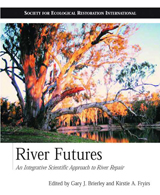
- frames the development of integrative river science and its application to river rehabilitation programs
- develops a coherent set of guiding principles with which to approach integrative river science
- considers the application of cross-disciplinary thinking in river rehabilitation experiences from around the world
- examines the crossover between science and management, outlining issues that must be addressed to promote healthier river futures
Case studies explore practical applications in different parts of the world, highlighting approaches to the use of integrative river science, measures of success, and steps that could be taken to improve performance in future efforts.
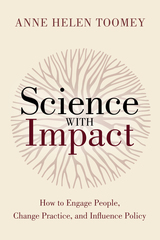
In this accessible volume, Toomey unpacks why “facts” mean different things to different people and how science-based attitudes and behaviors spread. Using humor, stories, and down-to-earth examples from her own science journey, she explains why seemingly straightforward evidence can sometimes feel irrelevant, or even threatening, to a skeptical public. This practical, how-to guide will help scientists think more carefully about the choices they make even before collecting data. It explores how researchers and others who work with science can address public distrust, communicate about uncertainty, and engage with policymakers for real-world impact.
Science with Impact argues that science can—and should—make a meaningful difference in society. It offers hope and guidance to those of us who wish to take the steps to make it so.
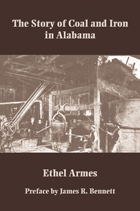
“The principal authority for the general treatment of the history of coal, and of iron and steel, in
Alabama is the work of Miss Ethel Armes. The Story of Coal and Iron in Alabama is a comprehensive
and scholarly work portraying in attractive style the growth of the mineral industries in its
relation to the development of the state and of the South, in preparation of which the author spent
more than five years.”
—Thomas McAdory Owen, History of Alabama and Dictionary of Alabama Biography

READERS
Browse our collection.
PUBLISHERS
See BiblioVault's publisher services.
STUDENT SERVICES
Files for college accessibility offices.
UChicago Accessibility Resources
home | accessibility | search | about | contact us
BiblioVault ® 2001 - 2025
The University of Chicago Press





